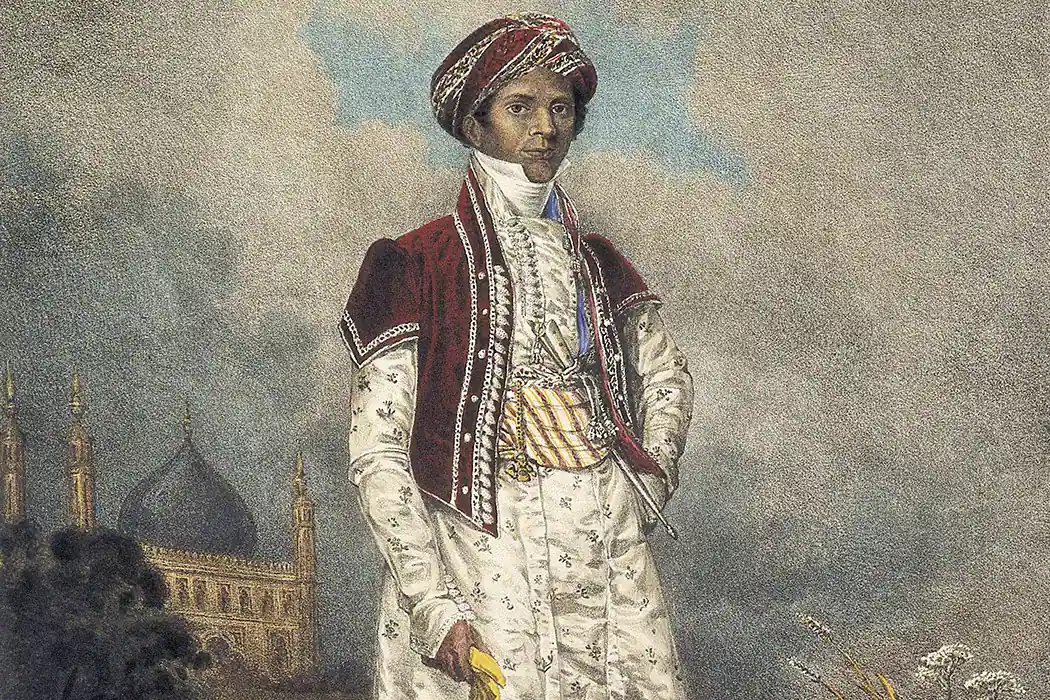Sake Dean Mahomed - The Pioneer Of Shampooing And Indian Cuisine In Europe
Sake Dean Mahomed is a name that resonates with innovation and cultural integration. As a pioneer in the early 19th century, he introduced the concepts of shampooing and Indian cuisine to Europe, particularly in Britain.

Jun 13, 2024
Sake Dean Mahomedwas a visionary whose influence in the early 19th century continues to resonate today. As the first to introduce Indian cuisine and the practice of shampooing to Britain, he played a key role in shaping cultural integration between East and West. His entrepreneurial spirit, literary contributions, and enduring legacy reflect the significant impact he had on British society.
Early Life
Sake Dean Mahomed was born in 1759 in Patna, Bihar, India. He grew up in a prosperous family and received a comprehensive education. His early years were marked by exposure to diverse cultures and traditions, laying the foundation for his future endeavors.
Journey To Europe
In 1782, Mahomed moved to Ireland with his employer, Captain Godfrey Evan Baker, an officer in the East India Company. This move marked the beginning of his long and influential journey in Europe. Mahomed's keen interest in sharing his culture with the Western world became evident during his time in Ireland.
Entrepreneurial Ventures
Hindoostanee Coffee House
In 1810, Sake Dean Mahomed opened the Hindoostanee Coffee House in London, the first Indian restaurant in Britain. The restaurant offered authentic Indian cuisine and became a popular dining spot for British elites. Despite its initial success, the venture faced financial difficulties and eventually closed.
Introduction Of Shampooing
Mahomed's most notable contribution was the introduction of shampooing, a term derived from the Hindi word "champi," meaning massage. In 1814, he opened the first commercial "shampooing" vapor masseur bath in Brighton. His unique treatment combined therapeutic massage with herbal steam baths, attracting a wide clientele, including British royalty. Mahomed's shampooing treatments revolutionized personal care and hygiene in Britain.
Literary Contributions
Sake Dean Mahomed was also an accomplished author. In 1794, he published "The Travels of Dean Mahomet," one of the first books in English by an Indian author. The book provided a detailed account of his experiences in India and Europe, offering readers a unique perspective on Indian culture and society.
Cultural Impact
Influence On British Society
Mahomed's contributions significantly influenced British society. His introduction of Indian cuisine and therapeutic massage popularized aspects of Indian culture in Britain. The Hindoostanee Coffee House set the stage for the proliferation of Indian restaurants across the country, while his shampooing treatments became a staple in British wellness practices.
Legacy In Modern Times
Today, Sake Dean Mahomed's legacy continues to be celebrated. His innovative spirit and cultural integration have left an indelible mark on British society. Modern Indian restaurants and spas often pay homage to Mahomed's pioneering efforts, recognizing his role in introducing these cultural elements to the West.
Personal Life
Sake Dean Mahomed married Jane Daly, an Irish woman, in 1786. The couple had seven children and their marriage symbolized the blending of Eastern and Western cultures. Mahomed's personal life reflected his professional endeavors, showcasing his commitment to cultural integration.
Challenges And Achievements
Despite facing numerous challenges, including financial difficulties with the Hindoostanee Coffee House and initial skepticism towards his shampooing treatments, Mahomed persevered. His ability to overcome these obstacles and succeed in a foreign land is a testament to his determination and ingenuity.
Honors And Recognitions
Sake Dean Mahomed's contributions have been recognized posthumously. In 2005, a blue plaque was installed at his former Brighton residence, honoring his achievements. His legacy is also celebrated in various cultural and historical contexts, highlighting his role as a pioneer and innovator.
FAQs
Who Was Sake, Dean Mahomed?
Sake Dean Mahomed was an Indian entrepreneur, author, and pioneer who introduced shampooing and Indian cuisine to Europe in the early 19th century.
What Is Sake Dean Mahomed Known For?
He is known for opening the first Indian restaurant in Britain and introducing therapeutic shampooing treatments to Europe.
What Was The Hindoostanee Coffee House?
The Hindoostanee Coffee House, opened by Mahomed in 1810, was the first Indian restaurant in Britain, offering authentic Indian cuisine.
How Did Sake Dean Mahomed Influence British Culture?
He popularized Indian cuisine and therapeutic massage in Britain, significantly influencing British dining and personal care practices.
What Is Mahomed's Literary Contribution?
He authored "The Travels of Dean Mahomet," one of the first books in English by an Indian author, providing insights into Indian culture and society.
Conclusion
Sake Dean Mahomed's life and work exemplify the power of cultural exchange and innovation. His pioneering efforts in introducing Indian cuisine and shampooing to Europe have had a lasting impact, enriching British society and culture. Mahomed's legacy continues to inspire, reminding us of the importance of embracing and celebrating cultural diversity.